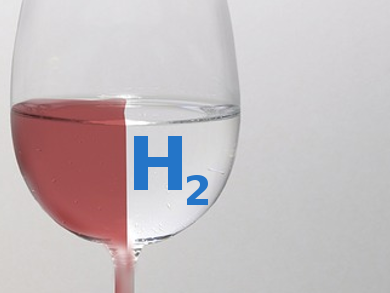Inexpensive transition metal oxides are competitive water oxidation catalysts (WOCs) in alkaline media. However, they cannot compete with noble metals in acidic media, in which hydrogen production is easier and faster.
José Ramón Galan-Mascaros, Institute of Chemical Research of Catalonia (ICIQ), Tarragona, Spain, and colleagues have investigated WOCs based on earth-abundant metals. They have developed catalysts with enhanced activity containing insoluble salts of polyoxometalates (POMs) with cesium or barium counter-cations. In particular, the barium salt of a cobalt-phosphotungstate polyanion (Ba[Co-POM]) outperforms the state-of-the-art IrO2 catalyst even at pH < 1. Lower onset potentials, higher current densities at lower overpotentials, and Faradaic oxygen evolution demonstrate that these salts are an alternative to the corresponding noble metal catalysts.
In addition, the team has found that a carbon paste (CP; formed by carbon black and an organic oil binder) conducting support with a hydrocarbon binder can improve the stability of metal-oxide catalysts in acidic media by providing a hydrophobic environment. Part of the better performance of the Co-POM/CP electrodes could arise from a better matching between the CP support and the Co-POM catalysts when compared with IrO2. The findings of the team suggest that the use of an insulating hydrocarbon binder, and an appropriate conducting support, could extend the use of classic metal oxides into acidic media oxygen evolution reaction (OER) catalysis.
The catalysts work especially well at low voltages. This saves electricity and will allow, according to the researchers, soon, to obtain the energy required for water splitting from renewable sources like solar panels. This is the first time that a competitive activity is found in a low cost, earth-abundant material, opening unprecedented opportunities to develop technologically and economically viable acid water electrolysis.
- Polyoxometalate electrocatalysis based on earth-abundant metals for efficient water oxidation in acidic media,
M. Blasco-Ahicart, J. Soriano-López, J. J. Carbó, J. M. Poblet, J. R. Galán-Mascarós,
Nature Chem. 2017.
https://doi.org/10.1038/nchem.2874


![Unique Features of the Dinuclear Zirconocene Complex [(Cp₂Zr)₂(µ-Me)(µ-C₂Ph)]](https://www.chemistryviews.org/wp-content/uploads/2025/03/202503_Dinuclear-Zirconocene-Complex-125x94.png)

